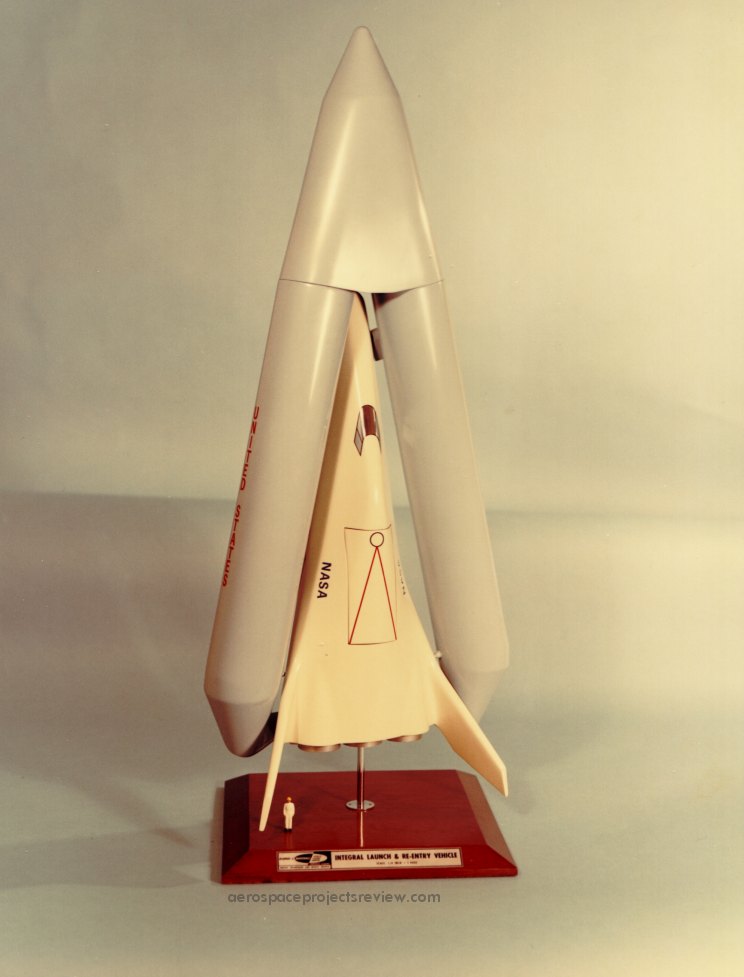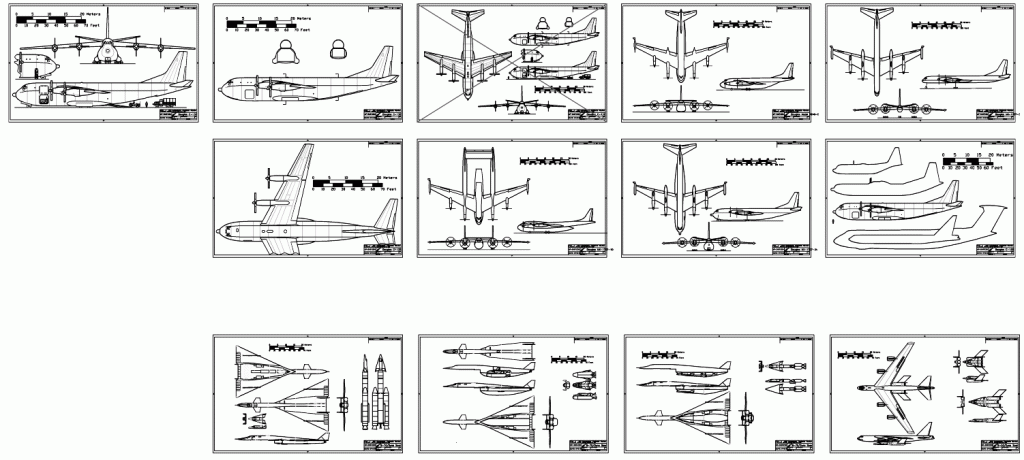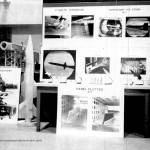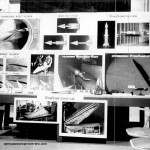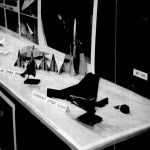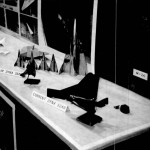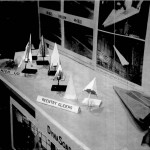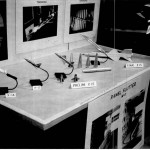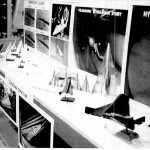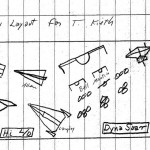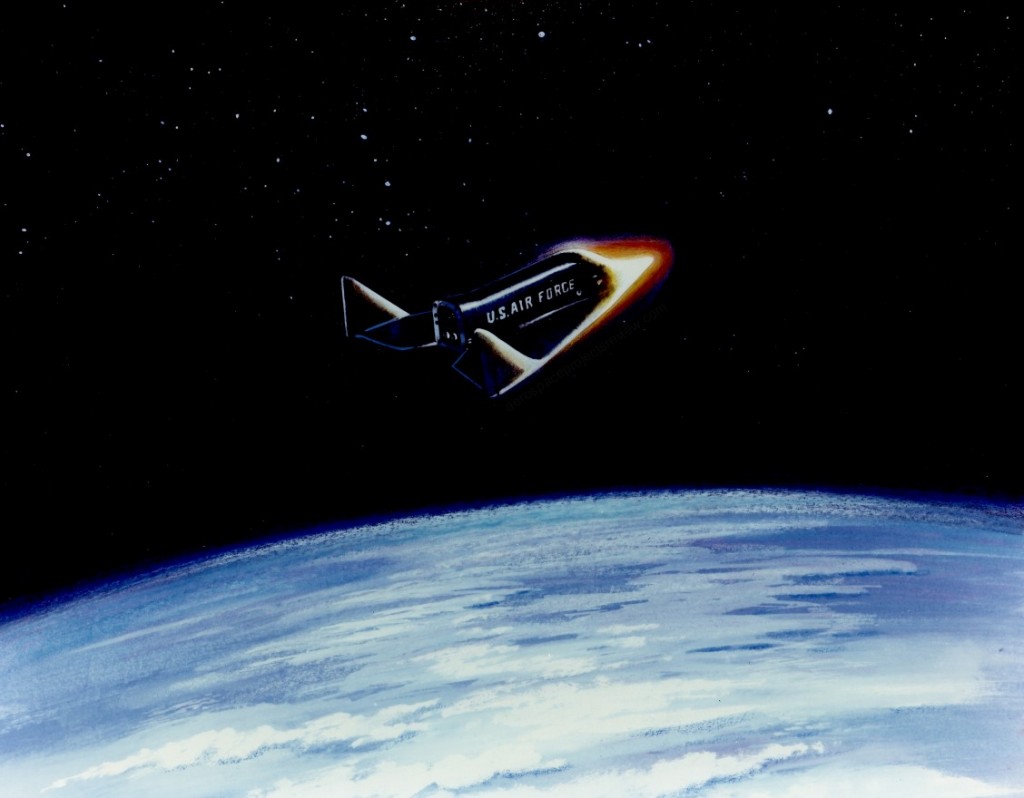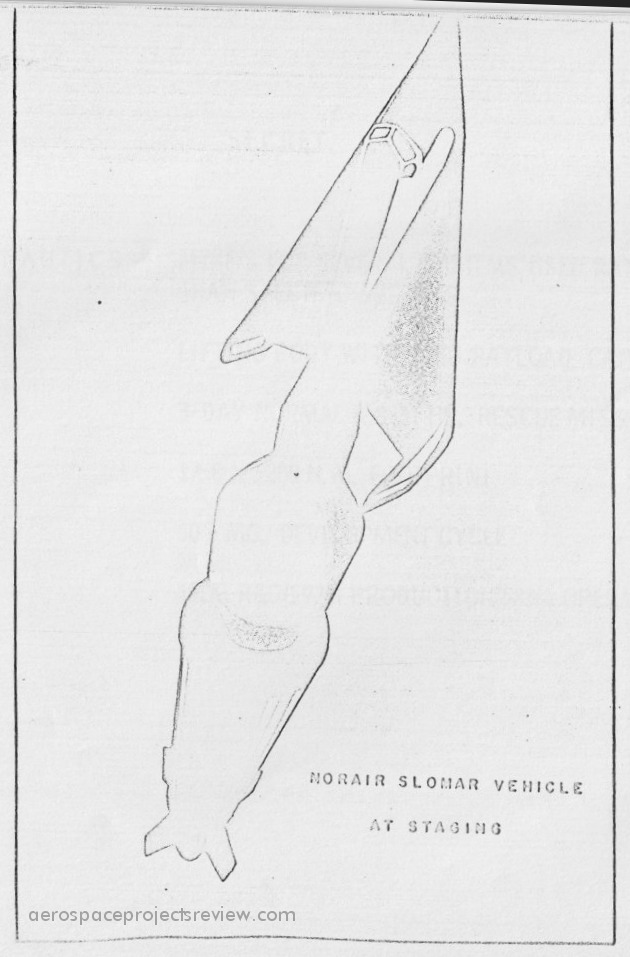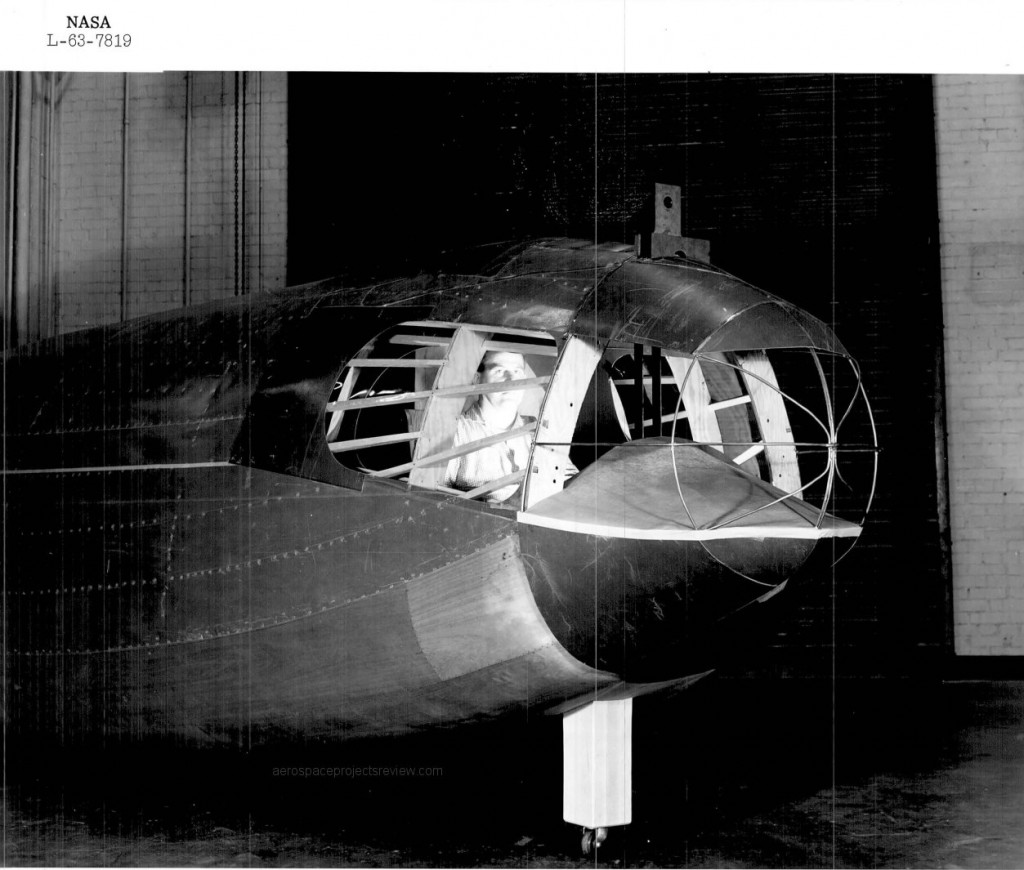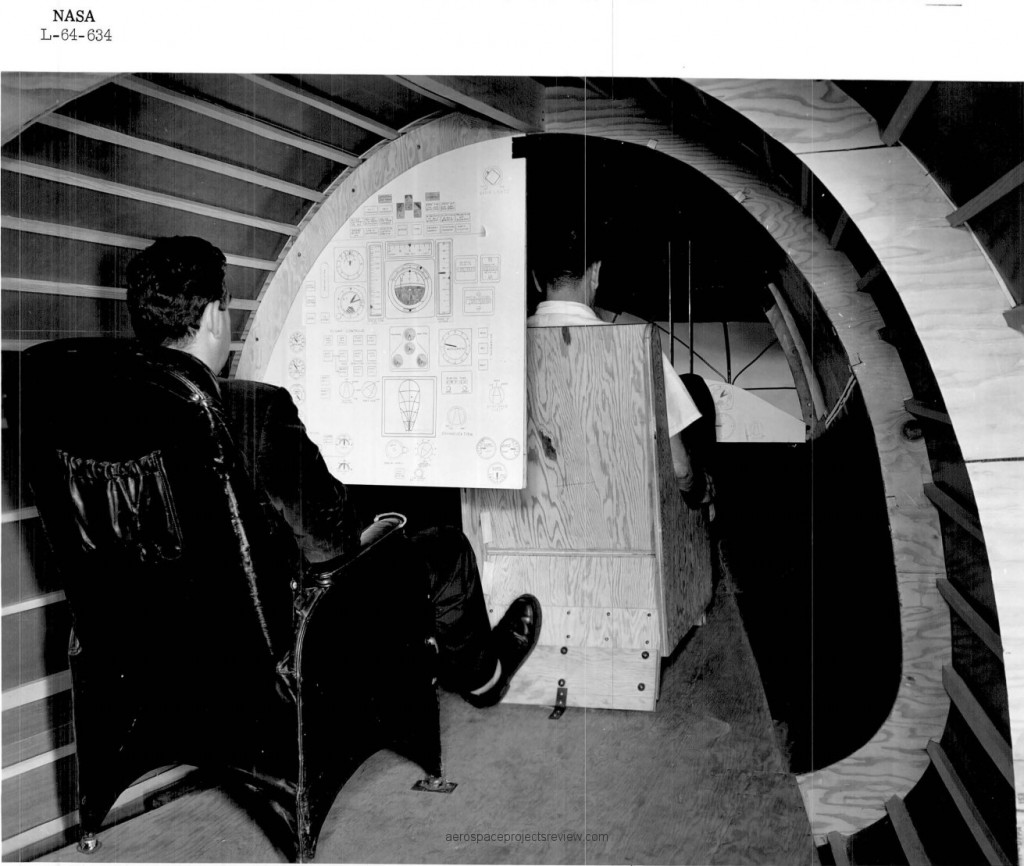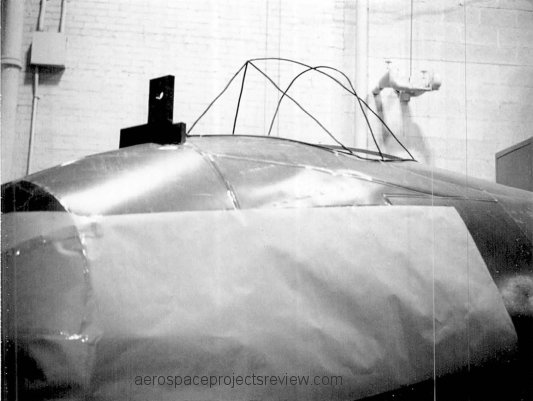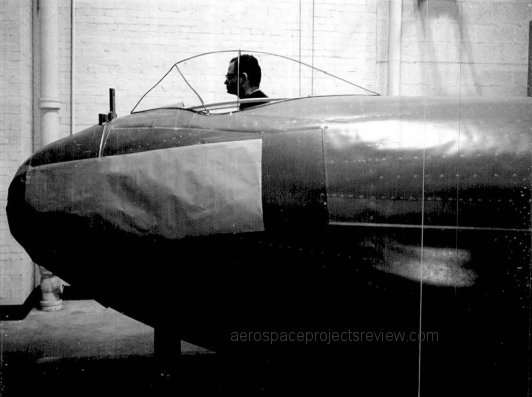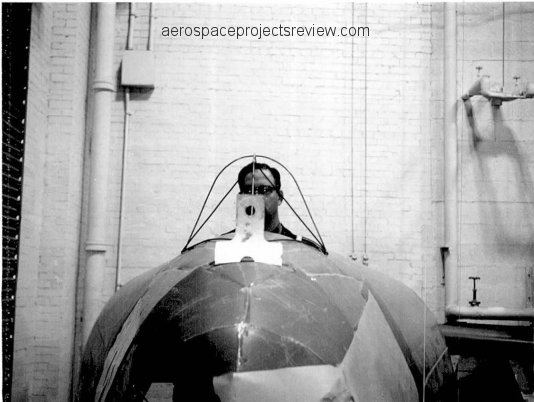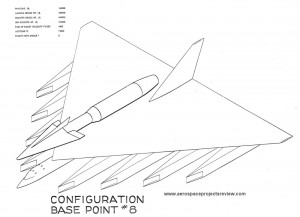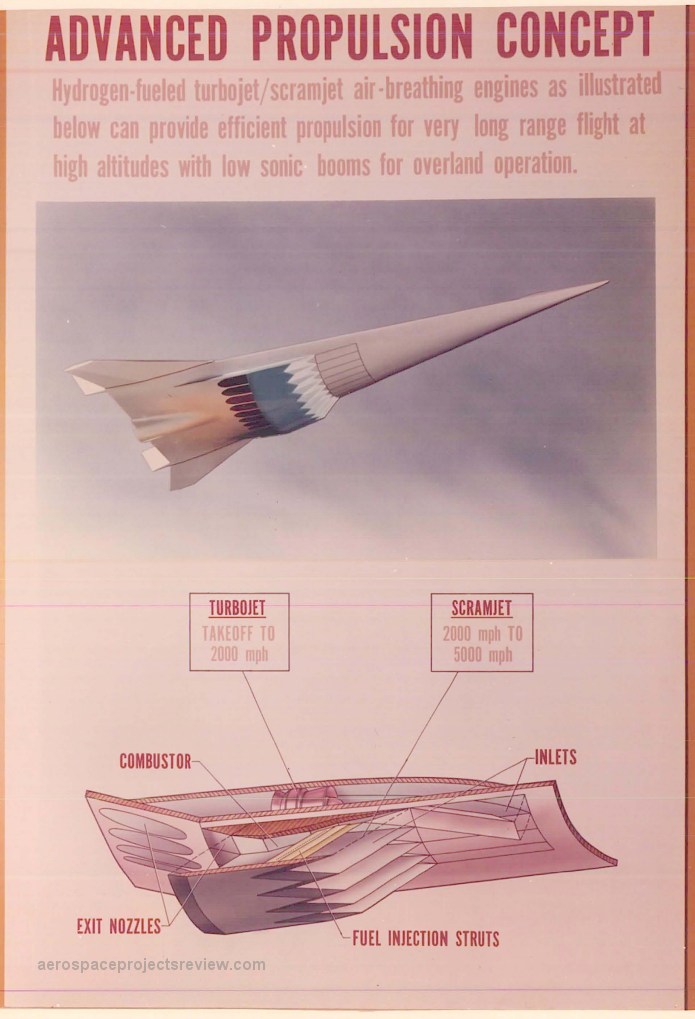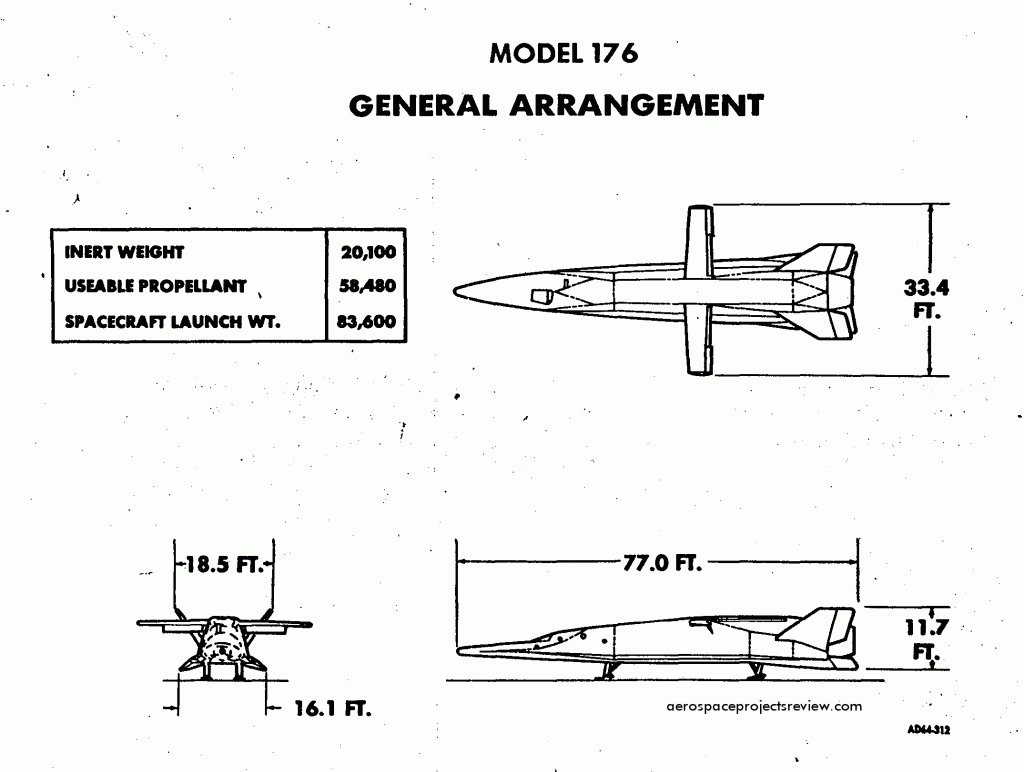A photo (via the NASA HQ History Office) of the Lockheed STAR Clipper. This was an early stage-and-a-half concept with a reusable orbiter and expendable propellant tanks. Vastly more info on this is available in APR issue V3N2.
From sometime around 1963, a few photos of wind tunnel models at NASA-Langley. Shown are a range of Dyna Soar models, from pre-Dyna Soar “HYWARDS” concepts to the initial Boeing 844 design to the final Boeing Model 2050E configuration.
The quality is terrible, but apart from photos of a display model, this is the only illustration have of Northrop’s design for SLOMAR (Space LOgistics Maintenance And Rescue), a USAF program circa 1961 to study the sort of spacecraft that would be needed for crew and cargo transport to the space stations that everyone knew the USAF would have in some abundance by the end of the decade. The Northrop design is virtually identical in configuration to the Boeing Dyna Soar, though apparently a bit bigger.
This one, based on the same crude mockup, moved the pilot lower. It is much more like the HL-10 as actually built, with no disruptions to the basic lifting body mold line. It does have a quite different window arrangement, however.
Curiously, it seems that seating for more crew than just the pilot was considered. This indicates that this planning wasn’t just for a purely research vehicle, but an orbital vehicle intended to transport a crew.
From photos circa 1963-1964 show a full-scale NASA-Langley mockup of the forward nose section of the HL-10 lifting body shape. Incorporated into this was a framework showing a potential canopy configuration. This would clearly have been for a low-speed (non-orbital) test version, much like the HL-10 that was actually built.
A 1959 Boeing concept for an airbreathing HTOL booster for Dyna Soar. Compared to the other pure-rocket VTO boosters, this would have been a monster… far bigger, far heavier, far, far more expensive. Which almost certainly explains why not only did such a booster not get serious study further down the line for Dyna Soar, it didn’t even rate detailed diagrams in the reports.
Staging would have been an interesting show.
NOTE: The isometric artwork for baseline concepts 4-7? Not available, sadly.
A piece of NASA-Langley artwork describing the future of aeropropulsion… the scramjet engine. The provenance on the art is hazy at best… found in the uncatalogued collection of a former Langley engineer, it probably dates to the mid 1960’s. The aircraft illustrated here has been seen from the early 1960s up into the late 1980s, so that at best brackets the art. The aircraft has been used as a hypersonic transport and as the first stage of a space launch system. As shown here, the model used was *probably* a wind tunnel model repainted and repurposed as a display model… none of the diagrams I’ve seen of it have included the “hump” on the underside of the aft expansion ramp. Most likely that’s the connection point for the support “sting” for tunnel use. Alternatively, it *could* represent a fairing for a rather sizable rocket engine, though that seems unlikely… during scramjet operation the hump would not only mess with exhaust flowfields, it would also be subjected toa whole lot of thermal unpleasantness.
As of 1964, the GA of the Models 176, a lifting body, stowed-wing spaceplane. See HERE for late 1960’s artwork of a larger version.
